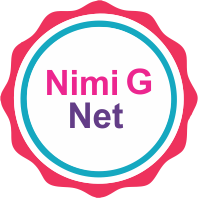Are you searching for the UGC NET Electronic Science Syllabus 2023 PDF Download? Look no further, as we have compiled all the important details and tips to help you prepare for the exam.
The UGC NET Electronic Science exam is conducted by the National Testing Agency (NTA) for candidates who wish to pursue a career in the field of Electronic Science. The exam assesses the candidates’ knowledge in the subject and tests their eligibility for lectureship and research fellowships.
If you are planning to appear for the UGC NET Electronic Science 2023 exam, it is important to have a thorough understanding of the syllabus and exam pattern. In this article, we have compiled all the important information you need to know about the UGC NET Electronic Science Syllabus 2023 PDF Download
UGC NET Electronic Science Exam Pattern 2023:
The UGC NET Electronic Science exam consists of two papers – Paper 1 and Paper 2. Both papers are conducted on the same day, and the duration of each paper is 3 hours. The exam is conducted online, and each question carries 2 marks. There is no negative marking for incorrect answers.
The UGC NET Electronic Science Exam consists of two papers: Paper 1 and Paper 2.
Paper 1:
- Duration: 3 hours
- Number of questions: 50
- Total marks: 100
- Type of questions: Multiple Choice Questions (MCQs) based on general aptitude, teaching and research aptitude, and current affairs.
Paper 2:
- Duration: 3 hours
- Number of questions: 100
- Total marks: 200
- Type of questions: MCQs based on Electronic Science subjects.
Both papers are conducted in a single session with no break in between. The candidates are required to appear for both papers to be considered for the selection process.
It’s important to note that there is no negative marking for incorrect answers in UGC NET Electronic Science Exam.
UGC NET Electronic Science Syllabus 2023: Download PDF
The UGC NET Electronic Science syllabus is divided into two parts – Paper 1 and Paper 2. Here’s a detailed syllabus for both papers.
Paper 1 Syllabus:
Teaching Aptitude:
- Teaching: Nature, objectives, characteristics, and basic requirements.
- Learner’s characteristics: Characteristics of adolescent and adult learners, and individual differences.
- Methods of teaching: Teacher-centered vs. learner-centered methods; Off-line vs. online methods.
- Evaluation systems: Elements and types of evaluation, evaluation in higher education, and grading system.
Research Aptitude:
- Research: Meaning, types, and characteristics.
- Steps of research.
- Methods of research.
- Research Ethics.
Reading Comprehension:
- Comprehension passages.
Communication:
- Communication: Nature, characteristics, types, barriers, and effective communication.
- Verbal and non-verbal communication.
- Classroom communication.
Logical Reasoning:
- Understanding the structure of arguments.
- Evaluating and distinguishing deductive and inductive reasoning.
- Verbal analogies.
Data Interpretation:
- Sources, acquisition, and interpretation of data.
- Quantitative and qualitative data.
- Graphical representation and mapping of data.
Paper 2 Syllabus:
Nta Ugc Net Electronic Science Syllabus 2023 in English
UNIT-I
Introduction to Semiconductor, energy bands in solids, concept of effective mass, density of states, Fermi levels. PN Junction, Diode equation and diode equivalent circuit, Breakdown in diodes, Zener diode, Tunnel diode, Metal semiconductor junction – Ohmic and Schottky contacts, Characteristics and equivalent circuits of JFET, MOSFET. Low dimensional semiconductor devices – quantum wells, quantum wires, quantum dots. High Electron Mobility Transistor (HEMT), Solar cells – I-V characteristics, fill factor and efficiency, LED, LCD and flexible display devices. Emerging materials for future Devices: Graphene, Carbon Nano tubes (CNT), ZnO, SiC etc.
UNIT-II
IC fabrication – crystal growth, epitaxy, oxidation, lithography, doping, etching, isolation methods, metallization, bonding, Thin film deposition and characterization Techniques: XRD, TEM, SEM, EDX, Thin film active and passive devices, MOS technology and VLSI, scaling of MOS devices, NMOS and CMOS structures and fabrication, Characteristics of MOS transistors and threshold voltage, NMOS and CMOS inverters, Charge-Coupled Device (CCD) – structure, charge storage and transfer, Basics of VLSI design, stick diagrams, Layout design rules.
UNIT-III
Superposition, Thevenin, Norton and Maximum Power Transfer Theorems, Network elements, Network graphs, Nodal and Mesh analysis. Laplace Transform, Fourier Transform and Z-transform. Time and frequency domain response, Passive filters, Two-port Network Parameters : Z, Y, ABCD and h parameters, Transfer functions, Signal representation, State variable method of circuit analysis, AC circuit analysis, Transient analysis, Zero and Poles, Bode Plots.
1
Continuous time signals, Fourier Series and Fourier transform representations, Sampling theorem and applications, Discrete time signal, Discrete Fourier transform (DFT), Fast Fourier transform (FFT), Basic concepts of digital signal processing, digital filters – IIR, FIR.
UNIT – IV
Rectifiers, Voltage regulated ICs and regulated power supply, Biasing of Bipolar junction transistors and FETs, operating point and stability, Amplifiers, Classification of amplifiers, Concept of feedback, Hartley, Colpitt’s and Phase Shift oscillators, Operational amplifiers (OPAMP) – characteristics, computational applications, comparators, Schmitt trigger, Instrumentation amplifiers, wave shaping circuits, Phase locked loops, Active filters, Multivibrators, Voltage to frequency convertors (V/F), frequency to voltage convertors (F/V).
UNIT-V
Logic Families, Logic Gates, Boolean algebra and minimization techniques, Combinational circuits, Programmable Logic Devices (PLD), CPLD, flip-flops, memories, Sequential Circuits: Counters – Ring, Ripple, Synchronous, Asynchronous, Shift registers, multiplexers and demultiplexers, A/D and D/A converters, Analysis and Design of fundamental mode state machines: State variables, State table and State diagram. Sequential PLD, FPGA, Analysis and Design of digital circuits using HDL.
UNIT-VI
Introduction of Microprocessor 8086: Architecture, Addressing modes, instruction set, interrupts, Programming, Memory and I/O interfacing. Introduction of Microcontrollers – 8051 for embedded systems, Architecture and register set of Microcontroller 8051, Addressing modes, Instruction set of 8051 – Data transfer instructions, Arithmetic instructions, Logic instructions, bit level and byte level control transfer instructions, 8051 assembly programming – stack operations, subroutines, interrupts, 8051 programming as timer/counter, 8051 serial communication, 8051 interfacing RS232, LED/LCD display, Keyboard , Stepper motor.
UNIT-VII
Electrostatics – vector calculus, Gauss’s Law, Laplace and Poisson’s equations, Magnetostatics – Biot Savert’s law, Ampere’s law and electromagnetic induction, Maxwell’s equations and wave equations, Plane wave propagation in free space, dielectrics and conductors, Poynting theorem, Reflection and refraction, polarization, interference, coherence and diffraction, Transmission lines and waveguides – line equations, impedance, reflections and voltage standing wave ratio, rectangular waveguides. Antennas – retarded potential and Hertzian dipole, half wave antenna, antenna patterns, radiation intensity, gain, effective area and Frii’s free space receiver power equation.
2
Microwave Sources and Devices -Reflex Klystron, Magnetron, TWT, Gunn diode, IMPATT diode, Crystal Detector and PIN diode. Radar – block diagram of Radar, frequencies and power used, Radar range equation.
UNIT-VIII
Analog modulation and demodulation – AM, FM and PM, Principle of super heterodyne receiver, Random signals, noise, noise temperature and noise figure, Basic concepts of information theory, Error detection and correction, Digital modulation and demodulation – PCM, ASK, FSK, PSK, BPSK, QPSK and QAM, Time and Frequency-Division Multiplexing, Multiple Access techniques, Data Communications – Modems, Codes, Principles of Mobile and Satellite Communication, Optical communication, Optical sources – LED, spontaneous and stimulated emission, semiconductor Lasers, Detectors – PIN photodiodes, Avalanche photodiodes (APD), Optical fibers – attenuation and dispersion characteristics, Bandwidth, Wavelength division multiplexing. Fundamentals of Internet of Things (IoT) for communication.
UNIT-IX
Power devices – characteristics of SCR, DIAC, TRIAC, power transistors, Protection of thyristors against over voltage and over current. SCR triggering – dv/dt and di/dt, triggering with single pulse and train of pulses, A.C. and D.C. motors – construction and speed control. Switched Mode Power Supply (SMPS). Uninterrupted Power Supply (UPS). Open loop and closed loop control system, Block Diagram reduction techniques, transfer function and signal flow diagram, Stability criterion: Routh-Hurwitz and Nyquist plot, On-off controller, Proportional (P), Proportional-Integral (PI), Proportional-Derivative (PD), PID controllers.
UNIT – X
Transducers – Resistance, Inductance, Capacitance, Piezoelectric, Thermoelectric, Hall effect, Photoelectric, Measurement of displacement, velocity, acceleration, force, torque, strain, temperature, pressure, flow, humidity, thickness, pH. Measuring Equipment – Measurement of R, L and C, Bridge and Potentiometers, voltage, current, power, energy, frequency/time, phase, Digital Multimeters, CRO, Digital Storage Oscilloscope, Spectrum Analyzer., Biomedical Instruments – ECG, EEG, Blood Pressure Measurements, MEMS and its applications Sensors for IoT applications.
Paper 2 Syllabus Download Pdf:
Ugc Net Electronic Science Syllabus 2023 in English
Ugc Net Electronic Science Syllabus 2023 PDF
Preparation Tips for UGC NET Electronic Science Exam 2023:
Here are some tips for preparing for the UGC NET Electronic Science exam 2023:
- Understand the syllabus and exam pattern thoroughly.
- Make a study plan
- Refer to standard textbooks and study materials recommended for the exam.
- Practice previous year question papers and mock tests.
- Focus on time management and accuracy while attempting the questions.
- Take regular breaks and maintain a healthy lifestyle to avoid burnout.
- Join coaching classes or online courses if necessary.
- Stay updated with current affairs related to the Electronic Science field.
Important Points:
- The UGC NET Electronic Science exam is conducted by NTA for candidates who wish to pursue a career in Electronic Science.
- The exam assesses the candidates’ knowledge in the subject and tests their eligibility for lectureship and research fellowships.
- The exam pattern of UGC NET Electronic Science 2023 includes multiple-choice questions and is conducted in online mode.
- The marking scheme of the exam is +2 for a correct answer and no negative marking for incorrect answers.
- The duration of the exam is 3 hours, and the number of questions is 150.
- The UGC NET Electronic Science Syllabus 2023 PDF Download is an important document that provides a detailed outline of the topics that will be covered in the exam.
- To download the syllabus, candidates can visit the official website of NTA and click on the link provided.
- The syllabus is available in PDF format and can be downloaded for free.
- The syllabus is divided into nine units, each covering a specific topic related to Electronic Science.
- To prepare for the exam, candidates must understand the syllabus, make a study plan, practice previous year question papers, join a coaching institute, take mock tests, and revise regularly.
FAQs:
- Is there any negative marking in the UGC NET Electronic Science exam 2023? Ans: No, there is no negative marking for incorrect answers.
- Can I download the UGC NET Electronic Science Syllabus 2023 PDF from the official website? Ans: Yes, the syllabus is available for download on the official website of NTA.
- What is the duration of the UGC NET Electronic Science exam 2023? Ans: The duration of each paper is 3 hours.
Also Check:
Conclusion:
In conclusion, the UGC NET Electronic Science exam 2023 is a crucial opportunity for aspirants who want to pursue a career in the teaching or research field. To crack the exam, it’s essential to have a clear understanding of the syllabus, exam pattern, and prepare accordingly. With a comprehensive understanding of the UGC NET Electronic Science Syllabus 2023 PDF download and proper preparation, you can clear the exam with flying colors.





